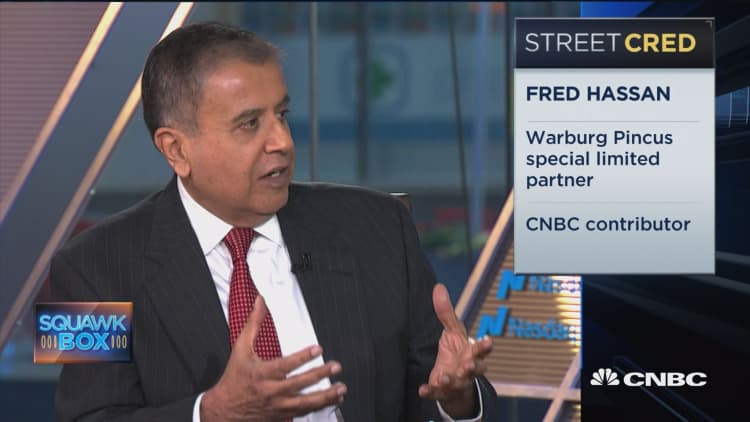Growth in U.S. health spending slowed considerably in 2016, rising by 4.3 percent, after two years of higher spending growth spurred by Obamacare and prescription drugs.
The slowdown in health spending growth was seen broadly across all major forms of private and public insurance, and in medical services, prescription drugs and other goods, according to an official analysis released Wednesday.
But because health spending grew faster, as it has for years, than overall gross domestic product, health spending's share of the economy increased to 17.9 percent in 2016, up from 17.7 percent of the economy the year before.
One exception to the slowdown in 2016 was spending on out-of-pocket health charges — including, copayments and deductibles, and spending not covered by insurance — which grew at their fastest rates since 2007.
The overall slowdown was highlighted by the National Health Expenditure report issued by the federal Centers for Medicare and Medicaid Services' Office of the Actuary.
The report noted that U.S. health spending rose by 5.1 percent in 2014, and then by 5.8 percent in 2015.
That higher growth in those years was due in part to the addition of 19 million Americans to the ranks of people insured by either private insurance or Medicaid as a result of the Affordable Care Act. Another factor was faster growth in spending on retail prescription drugs during those years.
But in 2016, spending by insurance payors and for prescription drugs slowed, the report noted
Private health insurance spending grew by 5.1 percent to $1.1 trillion in 2016, markedly slower than the 6.9 percent increase seen the prior year.
Medicaid spending growth was 3.9 percent in 2016, increasing to $565.5 billion. In contrast, Medicaid spending had shot up by 11.5 percent in 2014, and 9.5 percent in 2015.
Medicaid, which provides health coverage to primarily poor people, is jointly run by the federal government and individual states.
Medicare, the federally run program that provides health coverage to primarily older Americans, saw spending grow by 3.6 percent in 2016, to $672.1 billion. Medicare spending had increased by 4.8 percent in 2015 and 4.9 percent in 2014.
Spending on retail prescription drugs grew by only 1.3 percent, to $328.6 billion, in 2016. A year before, spending on such drugs grew by 8.9 percent, and in 2014 by 12.4 percent.
But out-of-pocket spending, or spending directly by individuals instead of by their insurance plans or programs, grew at a faster rate than in recent years.
Out-of-pocket health spending grew by 3.9 percent to $352.5 billion in 2016, up from 2.8 percent growth in 2015.
"The faster growth in 2016 was due in part to a continued shift towards enrollment in high-deductible health plans, which was somewhat offset by a continued decrease in the number of uninsured in 2016," according to CMS.
WATCH: Transforming health care through partnerships



